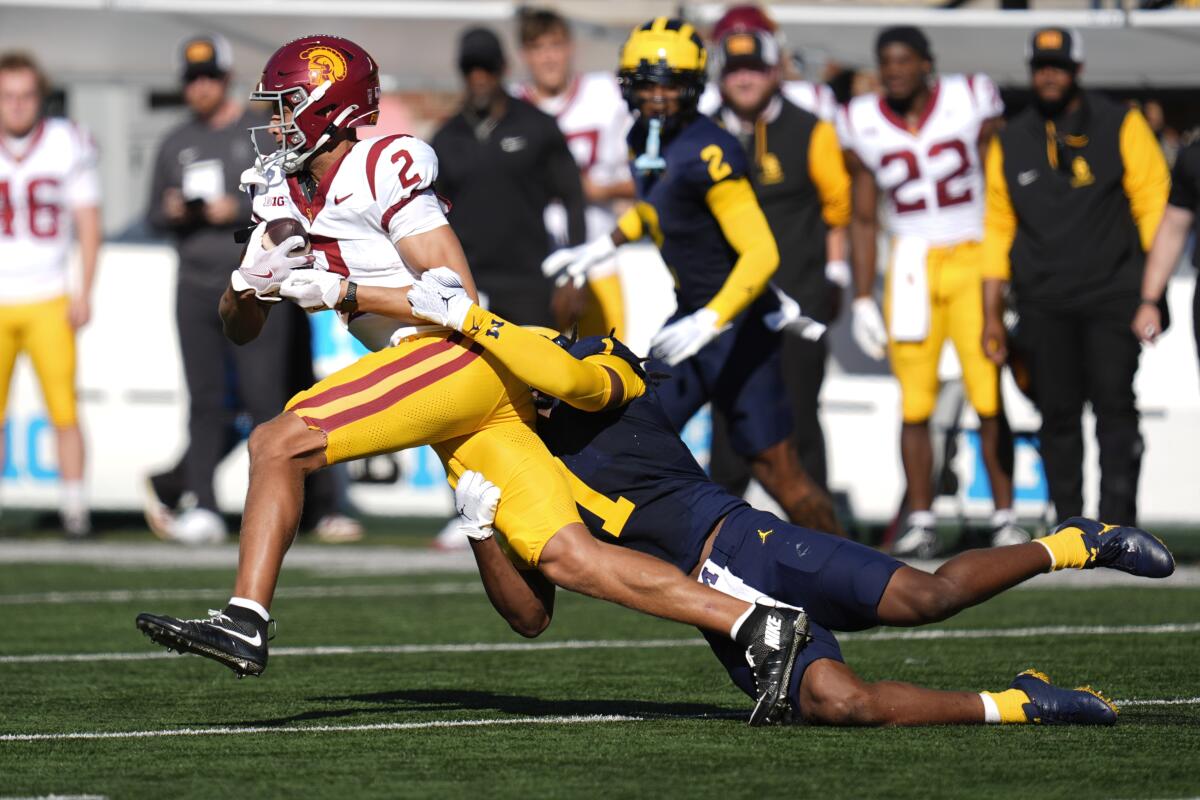Utah State agrees to join Pac-12 as realignment dispute with Mountain West intensifies: sources

The dramatic conflict between the Pac-12 and Mountain West over conference reorganization continued and remained volatile late Monday night. After four American Athletic Conference schools announced Monday they would remain in the league following heavy pressure from the six-member Pac-12, sources familiar with the situation said: The Athletic that Utah State has agreed to become the fifth Mountain West member to join the Pac-12, bringing the rebuilt league that began in September with just two schools to seven members by 2026.
But neither the Mountain West nor the Pac-12 can remain at seven members long-term and would have to revert to at least eight schools to remain recognized as an NCAA conference and Football Bowl Subdivision beyond 2026.
The Mountain West spent the weekend working to get its eight remaining members to commit to each other through a rights deal or other financial arrangements, with more than $111 million in exit and signing fees expected to be paid to the league by the Pac-12. Air Force, which had been attracting interest from the AAC and Pac-12, committed to staying with the Mountain West. Other Mountain West schools have begun to do the same.
But Utah State didn’t. Instead, the Aggies opted to move forward with the Pac-12, received a bid and accepted it, putting the two conferences at seven as talks continued late into the night.
All eyes are now on UNLV, which was a prime Pac-12 target after AAC schools Memphis, Tulane, USF and UTSA turned down the league due to concerns about Pac-12 projections, travel and the AAC’s high exit fees. UNLV is part of the same university system as Nevada, and there are mixed opinions on how difficult it would be to separate the two. Air Force could also end up coming back into play for the Pac-12 or AAC after Utah State unexpectedly blew up the MW deal.
The Pac-12 and Gonzaga have had discussions about the Bulldogs joining the league, but a deal or announcement is not imminent, people briefed on the situation said. The AthleticGonzaga would not be among the eight football members required by 2026.
The Pac-12’s two members, Oregon State and Washington State, could have added all 12 Mountain West schools at no cost, based on a schedule agreement the conferences signed last year. But the relationship between the leagues soured when they couldn’t agree on a 2025 schedule by Sept. 1 of this year. Boise State, Colorado State, Fresno State and San Diego State then joined the Pac-12, looking to move away from the Mountain West’s less-invested schools and hoping the momentum would create a new conference featuring the best of the non-Power 4 schools.
But the big push east didn’t work, and now the Pac-12 is looking at other Mountain West schools it didn’t have in its Plan A. There was some bad blood between the Mountain West schools after the top four defected two weeks ago, blindsiding the others. One reason the other eight hoped to stay together was to hurt them, either by receiving tens of millions of dollars in exit fees or by being invited as a group. But Utah State’s move could torpedo those hopes.
Adding Utah State increases the Pac-12’s transfer fee owed to the Mountain West to $55 million, while adding another Mountain West school would bring that to $67.5 million, on top of the roughly $18 million each Mountain West school owes in exit fees. That’s nearly $150 million to recreate almost exactly the same league they were just in.
That is, if there is still a Mountain West at the end of it all. Under Mountain West rules, a two-thirds agreement of the league’s members would be required to dissolve the conference, another semi-merger possibility that could eliminate all fees owed by schools leaving the league, leaving the few bottom schools to find something else. The Mountain West has discussed potential additions, such as UTEP, but nothing will happen until its own membership is secured.
This isn’t the first time Utah State has been part of a plan to destabilize the Mountain West. In 2010, Utah State helped the WAC lead “The Project,” which would have seen BYU leave the Mountain West to join the WAC in non-football sports and have other Mountain West schools follow. (The Mountain West itself formed in 1998 as a split from the WAC.) Instead, commissioner Craig Thompson convinced Fresno State and Nevada to join the Mountain West, setting in motion the events that ended the WAC’s run as an FBS conference. Utah State eventually joined the Mountain West in 2013.
Utah State was the unexpected disruptor again. Now, everyone is playing a numbers game with dwindling options. All for a league that isn’t expected to make much more money than the current Mountain West. It was a day of action that confounded industry observers. But the realignment of conferences amid an uncertain future for college sports has turned everything and everyone into a desperate game of fear of being left behind in some form. More discussions, and potentially decisions, are expected Tuesday.
(Photo: Chris Gardner/Getty Images)



